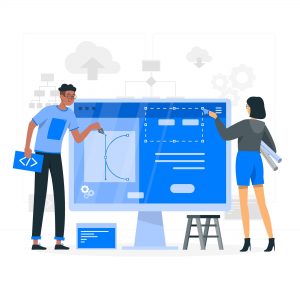
In the digital age, providing a personalized and customized user experience has become paramount for businesses seeking to engage their audience and stay ahead of the competition. Users have come to expect tailored experiences that cater to their individual preferences and needs. By understanding the importance of personalization and customization, website owners can create a user experience that resonates with their audience, fosters engagement, and ultimately drives conversions. In this article, we will explore the significance of personalization and customization in web design and provide actionable strategies to implement these elements effectively.
Why Personalization and Customization Matter
-
Enhanced User Engagement
Personalized experiences make users feel valued and understood, resulting in higher engagement levels. According to a study by Epsilon, 80% of consumers are more likely to make a purchase when brands offer personalized experiences. By tailoring content and features to match their interests and preferences, you can create a sense of connection that encourages users to explore your website further.
-
Improved User Satisfaction
When users encounter personalized experiences that align with their needs, they are more likely to have a positive perception of your brand. In fact, a survey by Infosys found that 59% of consumers who experienced personalization believe it has a significant impact on their purchasing decisions. Customized interactions demonstrate that you understand their unique requirements, leading to increased satisfaction and loyalty.
-
Increased Conversion Rates
Personalization and customization can significantly impact conversion rates. A study conducted by Segment revealed that 44% of consumers are likely to become repeat buyers after a personalized shopping experience. By presenting users with relevant recommendations, personalized offers, or targeted messaging, you can guide them through the customer journey and motivate them to take desired actions, such as making a purchase or signing up for a service.
Strategies for Effective Personalization and Customization
-
Data Collection and Analysis
Gather user data through various channels such as website analytics, surveys, and user feedback. Analyze this data to identify patterns, preferences, and behaviors that can be used to personalize the user experience. For instance, Netflix uses viewer data to suggest personalized movie and TV show recommendations, resulting in 80% of their TV show selections being driven by these recommendations.
-
Segmentation and Targeting
Divide your audience into distinct segments based on demographics, behavior, or preferences. Tailor content, promotions, and recommendations specifically for each segment to ensure relevance and resonance. According to a study by Forrester Research, targeted and personalized emails generate 58% of all revenue for marketers.
-
Dynamic Content
Use dynamic content modules to display personalized content based on user attributes or behavior. For example, showcase recommended products or articles based on their browsing history or provide location-specific information. Amazon’s “Customers who bought this item also bought” section is a prime example of dynamic content that encourages personalized recommendations.
-
Personalized Recommendations
Implement recommendation engines that suggest relevant products, services, or content based on users’ past interactions. These recommendations can be based on browsing history, purchase history, or collaborative filtering algorithms. Amazon’s recommendation engine drives 35% of their total sales, showcasing the effectiveness of personalized recommendations.
-
Adaptive User Interfaces
Create adaptive user interfaces that adjust based on user preferences. Allow users to customize their layout, color schemes, font sizes, and other elements to match their individual preferences and accessibility needs. Research conducted by Accenture Interactive found that 75% of consumers are more likely to make a purchase from a website that recognizes them by name, recommends products based on their purchase history, or knows their preferences.
-
Behavioral Triggers
Set up automated triggers based on user behavior to deliver personalized messages or offers. For example, send a follow-up email to users who abandoned their shopping carts or provide exclusive discounts for frequent visitors. According to a study by SaleCycle, personalized cart abandonment emails have an average open rate of 40.5%, compared to 28.7% for non-personalized emails.
-
User-Generated Content
Encourage users to contribute content, such as reviews, testimonials, or social media posts, which adds a personal touch and builds a sense of community. Highlight this user-generated content to showcase the diverse experiences and perspectives of your audience. According to Bazaarvoice, 64% of millennials and 53% of baby boomers value user-generated content over brand-generated content.
Personalization and customization are no longer optional in web design; they are essential elements for creating a user experience that resonates with your audience. By leveraging data, segmentation, and dynamic content, you can deliver tailored experiences that enhance engagement, satisfaction, and conversion rates. Embrace the power of personalization and customization to establish strong connections with your users and drive the success of your website in the highly competitive digital landscape. The statistics and examples provided demonstrate the tangible benefits of personalization and customization, making it a worthwhile investment for businesses aiming to thrive in today’s customer-centric world.



